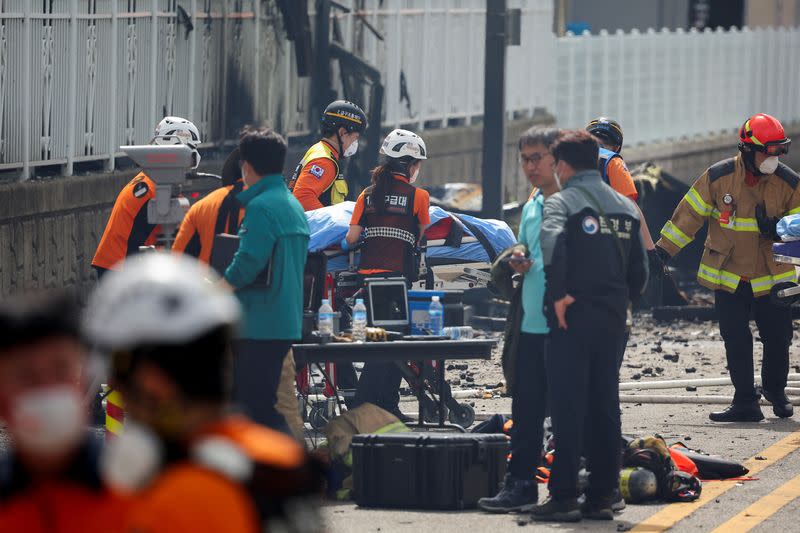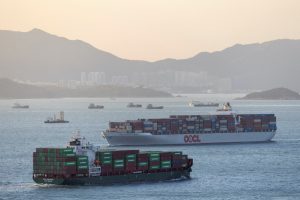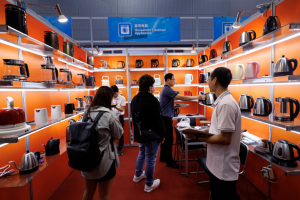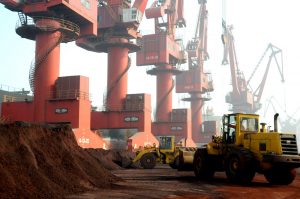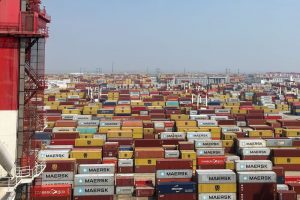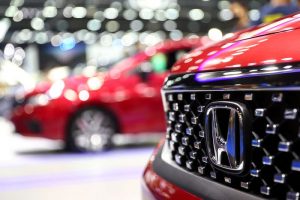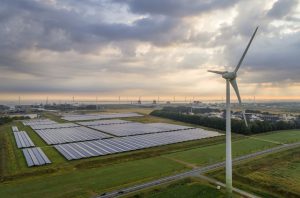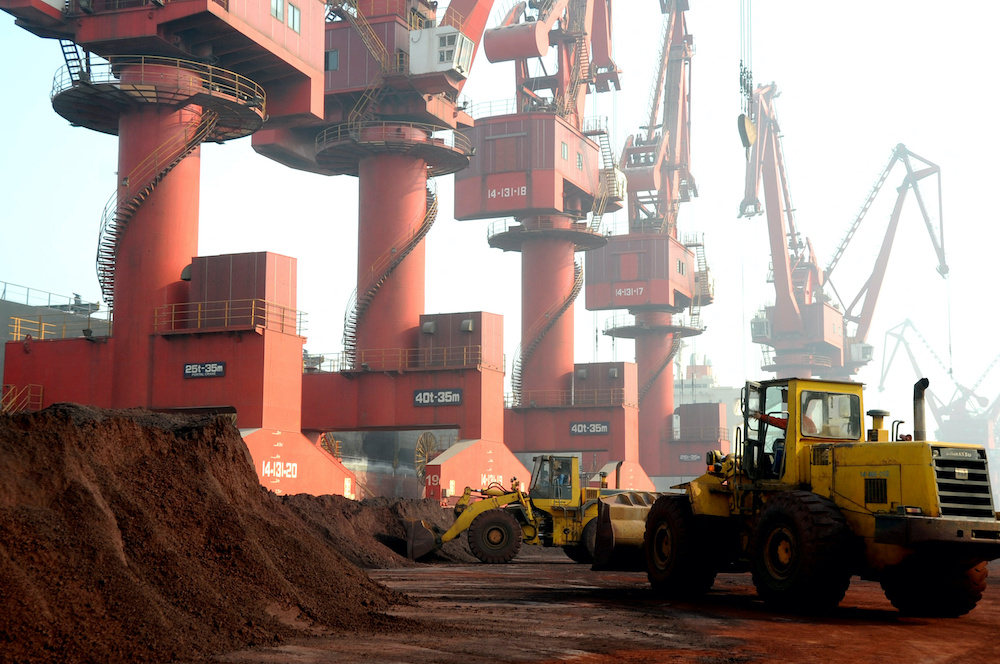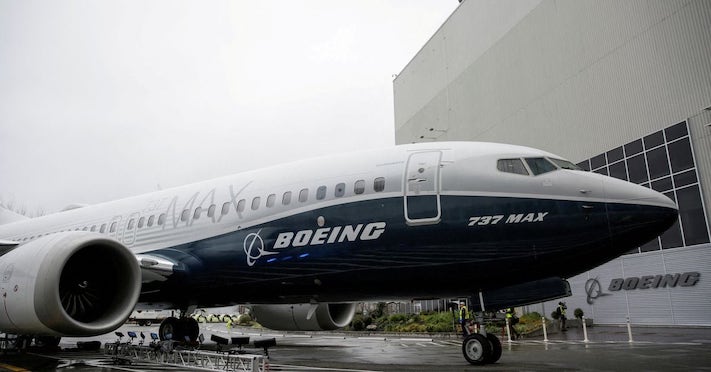At least 22 people were killed when a lithium battery factory in South Korea exploded and was gutted with fire on Monday.
Most of the victims – 18 – were workers from China, plus one came from Laos, but the nationality of the other victims had not been confirmed, according to local fire chiefs, who said that information came from company officials.
The fire, which started at 10.30am local time, has largely been extinguished. Fire chiefs said the blaze ripped through a factory run by battery manufacturer Aricell in Hwaseong, a major industrial cluster about 90 minutes southwest of the capital Seoul.
ALSO SEE: China EV-Makers Eat Into Japan, Korea’s Markets in SE Asia
The blaze began after a series of battery cells exploded inside a warehouse with some 35,000 units, said Kim Jin-young, a local fire official. What had triggered the explosion remains unclear, he added.
A Reuters witness saw firefighters moving up to six bodies out of the factory. Due to the intensity of the blaze, rescuers were finding it difficult to identify the dead, Kim added.
Yonhap news agency had earlier reported that some 20 bodies had been found inside the plant, but Kim told a televised briefing that 16 people had died and two others were suffering from burns and other serious injuries.
He said rescuers were inside the factory trying to find the five people unaccounted for.
Kim Jae-ho, Fire and Disaster Prevention professor at Daejeon University, said the fire had probably spread too quickly for workers to escape.
‘Battery materials flammable’
“Battery materials such as nickel are easily flammable,” he said. “So often, there is not enough time to respond, compared to a fire caused by other materials.”
President Yoon Suk Yeol was monitoring the situation, his office said, while Interior Minister Lee Sang-min called on the local authorities to take steps to prevent any hazardous chemicals from contaminating the surroundings.
Established in 2020, Aricell makes lithium primary batteries for sensors and radio communication devices. It has 48 employees, according to its latest regulatory filing and its Linkedin profile.
Calls to Aricell offices were unanswered.
The company is not listed on South Korea’s stock market but is majority owned by S-Connect, according to Aricell regulatory filing. S-Connect is registered on the junior Kosdaq index and its shares closed down 22.5%.
Live TV footage showed firefighters spraying the damaged steel and concrete building. Parts of the upper level had collapsed, and large chunks of the building looked like they had been blown out into the street by an explosion.
South Korea, a major industrial economy, has made efforts to improve its safety record after several past accidents, many of which have been blamed on negligence.
10,000 fires a year in Australia
The latest blaze comes as no surprise, given many reports of fires caused by lithium batteries. In Australia, waste management trucks witness more than 10,000 fires a year caused by lithium-ion batteries, according to a report by Interesting Engineering.
Rechargeable lithium-ion batteries are found in many modern devices like phones, tablets, power banks, computers, toys, appliances, tools, as well as electric bikes and scooters.
“Lithium-ion batteries (LiBs) are energy-dense and contain highly flammable materials. Risks and hazards associated with LiBs include fire, explosion, radiation, heat, chemical exposure, and electrical hazards,” it said, adding that the head of Australia’s Waste Management and Resource Recovery Association feared that having so many of these batteries could lead to a major tragedy in the near future.
People are advised not to mix these batteries with their regular waste or recycling bins, as it can lead to sudden fires, the report said.
- Reuters with additional input and editing by Jim Pollard
NOTE: This report was updated on June 24, 2024, to note a rise in the death toll.
ALSO SEE:
China Tamps Down Lithium Battery Makers Amid Overcapacity Worry
China Lithium Prices to Tank in 2024 Amid Global Supply Surge
China Battery Storage Capacity Growth Seen Slowing as Costs Bite
CATL in Talks With Tesla on Battery Tech Licence in US: WSJ
Chinese Lithium Battery Chief Urges Beijing to Fix Overcapacity
India’s JSW Planning $4.8 Billion EV, Battery Projects in Odisha
Breakthrough Lithium Battery Can be Charged 6,000 Times – TX
LFP Becoming the Battery of Choice for Electric Vehicles




